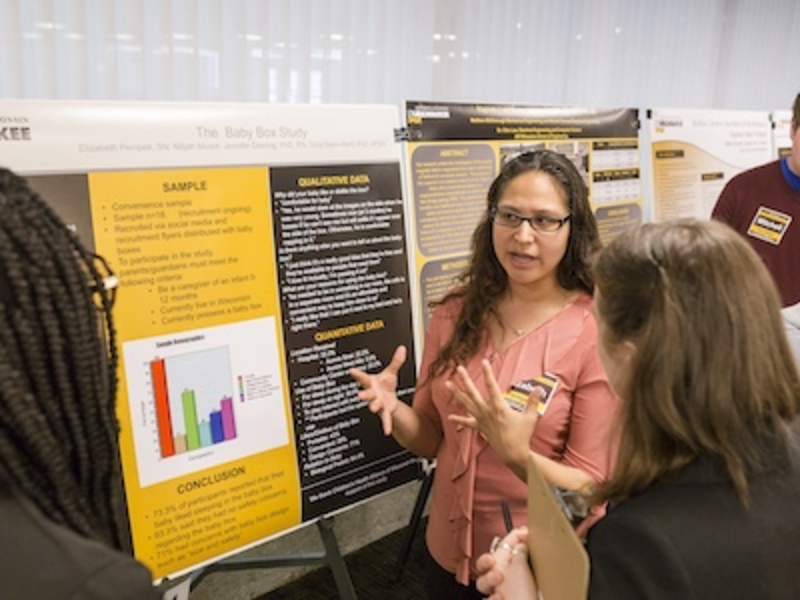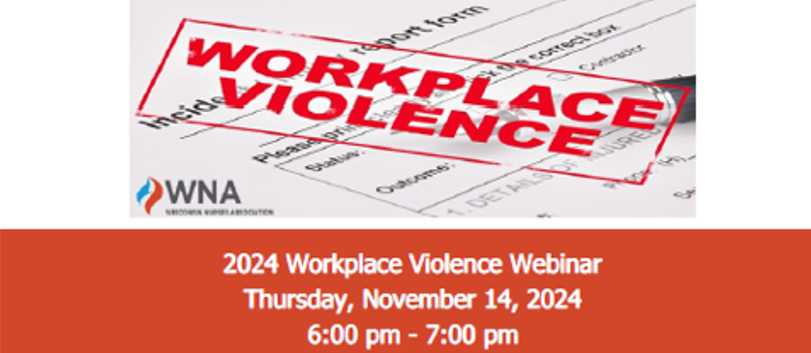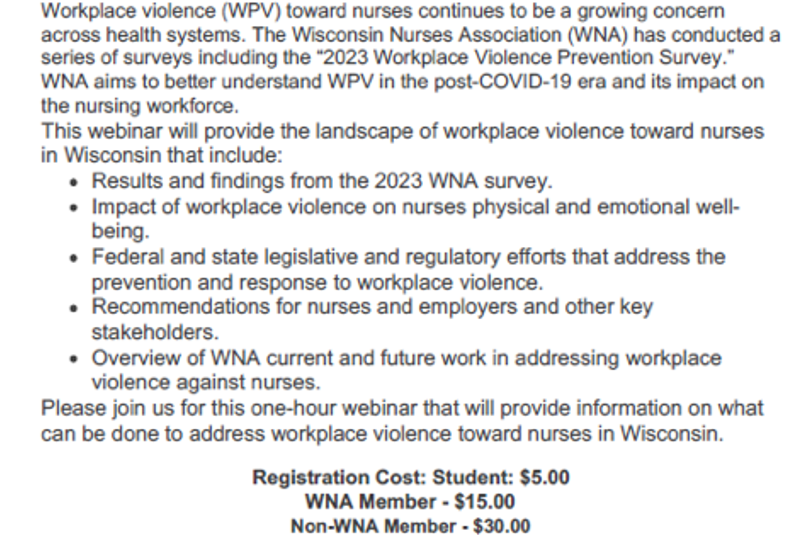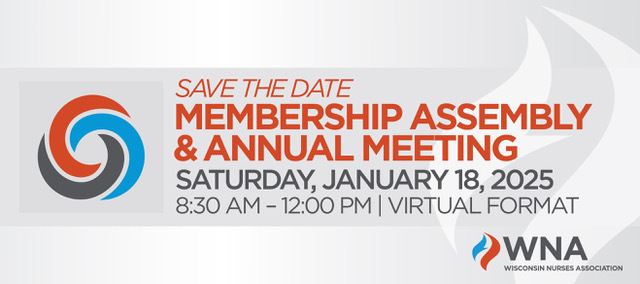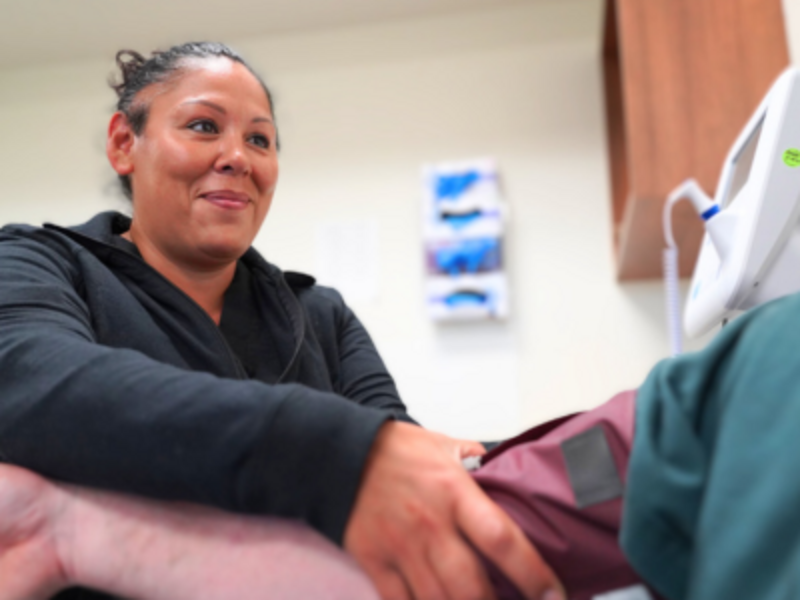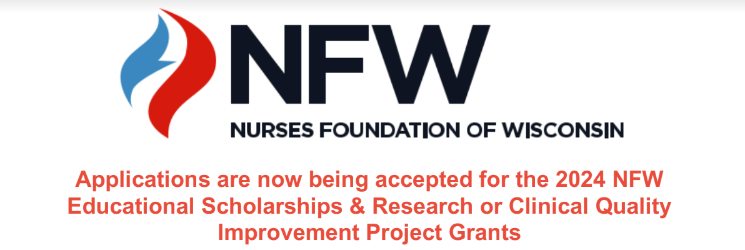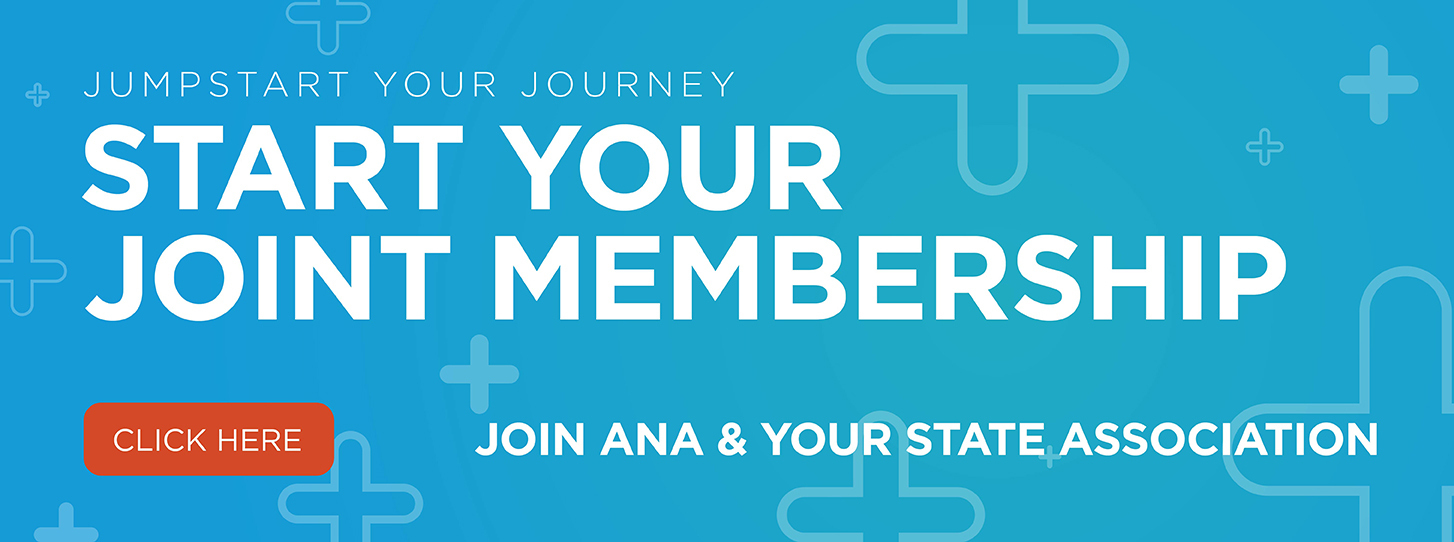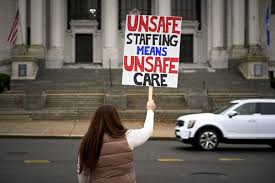
Executive Summary
There are considerable concerns about the stressors on the nursing workforce. Not only is there a state and nationwide nursing shortage, but the COVID pandemic exacerbated concerns about workplace violence and safety, burnout, stress, and staffing. Numerous initiatives can be implemented to address the nursing workforce issues. One solution that has been proposed is mandated minimum staffing ratios. Although the American Nurses Association (ANA) supports minimum staffing ratios, it acknowledges that they are only part of the solution. Of note is that the American Organization for Nurse Leaders does not support minimum staffing ratios since nurse staffing is dynamic and must account for more than patient acuity and unit type.
Policy Brief
Additionally, legislated ratios remove critical decision-making authority from the subject matter experts, the nurses caring for the patients. Other initiatives that can improve nurse staffing levels without limiting nurses’ autonomy and critical decision-making ability include the utilization of staffing committees consisting of 50% or greater direct patient care staff. Mandated state reporting of nurse staffing levels has also been proven to improve staffing levels. This paper highlights the concerns and benefits of minimum staffing ratios as well as other proposed solutions that allow nurses to maintain their autonomy. It was developed in response to pending legislation in the Hawaii State Legislature.
Background
Nursing Shortage
Prior to COVID, there were concerns over a looming nursing shortage as the number of elderly individuals increased in the United States. The aging nursing workforce and concerns about workplace safety, patient-to-nurse ratios, burnout, stress, and pay further exacerbate the need.1
As a result of the COVID pandemic, the nursing workforce has undergone a significant shift, and it is estimated that at least 200,000 experienced nurses left the profession from 2020 to 2022.2 Additionally, more than 25% of nurses reported planning to leave nursing or retire in the next five years.3 Specifically, in Hawaii, 52% of new nurses employed in long-term care settings report being likely to leave their jobs.4 Major reasons for nurses' intent to leave include insufficient staffing levels, the need for higher pay, not feeling supported or heard at work, and the emotional toll of the profession.5
Staffing
Safe staffing has been a priority issue in many states, and 16 states address nurse staffing in laws or regulations. The mechanism most states with legislation have implemented is a staffing committee comprised of at least 50% of direct care nurses to create unit-based staffing plans. Five states must disclose staffing levels to the public or regulatory bodies.6 There is some evidence that public reporting results in an increase in the number of nurses assigned to patients.7
Only three states have mandatory nurse-to-patient ratios.8 Massachusetts only mandates ratios for intensive care unit nurses (ICU) of 1-2 patients per RN. California was the first state to enact mandatory staffing ratios in 19999 and much of our research on minimum staffing ratios is based on California's legislation. California nursing ratios range from 1:1 in the Operating Room (OR) and Trauma Emergency Room (ER) to 1:5 for Medical-Surgical (MS)patients to 1:6 for Psychiatric and Post-partum (PP) patients.10
Oregon implemented mandatory minimum staffing ratios in January 2024. Oregon’s ratios range from 1:1 in the Trauma ER, OR and Labor & delivery to 1:4 for non-trauma ER, PP, MS, and Telemetry.11 An interesting addition to Oregon’s staffing ratios is that they include unit specific ratios for hospitals and allow for a staffing committee to approve innovative care models that differ from the state mandated ratios.12
CMS
The Centers for Medicare and Medicaid (CMS) issued a rule establishing minimum staffing standards for long-term care facilities (LTC). The rule sets nurse staffing requirements to hold nursing homes accountable for providing safe and high-quality care for residents undergoing care in CMS-certified LTC facilities.13 The staffing requirement is 0.55 RN and 2.45 Nursing Assistant hours per resident day.14
Professional Nursing Organization Positions
The ANA supports mandatory nurse-to-patient staffing ratios as a means to remedy nursing work environment challenges. The ANA clearly indicates that patient acuity, unit type, and nurse experience should be factored into mandatory ratios.15 The ANA is actively working with legislators to get enforceable staffing ratios passed into law.
The American Organization for Nursing Leadership (AONL) does not support mandated staffing ratios. The AONL postulates that staffing is complicated, and decisions must be based on nurse experience and clinical expertise, the care team composition, resources, and patient needs16. The AONL supports the stance that staffing, and acuities are dynamic and not best supported by mandated staffing ratios.
The American Academy of Nursing (AAN) has not published a statement about minimum staffing ratios for hospitals or acute care. However, the AAN did submit comments regarding the proposed rule regarding nursing home staffing. The AAN supports an RN on-site 24 hours per day in nursing homes17. It does not support the staffing ratios as written and urged CMS to identify and rigorously test minimum and optimum staffing standards.18 The recommendation for further research is in alignment with the National Academies of Science, Engineering, and Medicine (NASEM) 2022 report, The National Imperative to Improve Nursing Home Quality: Honoring Our Commitment to Residents, Families, and Staff. 19 The committee involved in the 2022 report found that current minimum nurse staffing standards are most likely underestimated for the care that nursing home residents need.20
Impact of Minimum Staff Ratios
Hospital Outcomes
The impact of minimum staffing ratios has been the subject of numerous studies, and outcomes are mixed. One study found shorter wait times in the emergency department. In contrast, another study found a decrease in left-without-being-seen patients (11.9 to 11.2%) and antibiotic administration times (103 to 62 mins) and an increase in wait times (79 to 123 mins). 21
Other studies compared California hospitals to hospitals in other states that did not have staffing ratios and found that infection rates in some California hospitals increased compared to those in states without mandated ratios.22 There was no significant difference in post-operative sepsis rates for hospitals with mandated versus non-mandated staffing ratios.23 A decrease in failure to rescue after implementing mandated staffing ratios was identified.24 There were no changes in the rate of complications in the ICU following the change in legislation.25 Another study found increased complications (5%) in hospitals with minimum staffing ratios but decreased pediatric cardiac mortality (4%) compared to other states following the legislation change.26
In California, mandated staffing ratios are known to result in decreased lengths of stay with no impact on readmission rates, even though minimum ratios resulted in a nearly 60-minute increase in nursing hours per patient day.27 Initial analysis of patient outcomes did not identify statistically significant changes in patient falls, pressure wounds, or restraints.28 However, to offset costs, hospitals increased the use of lower licensed staff and less experienced nurses and reduced bed capacity by 14%. 29
Nursing Home Outcomes
The impact of minimum nursing hours per resident day was also mixed. Higher staffing levels were correlated with a statistically significant reduction in contractures and restraints.30 Another study identified a significant decrease in pressure ulcers, restraints, and urinary catheters following the implementation of staffing regulations.31 Two studies found no statistically significant changes in pressure wounds, catheters, and restraints.32
Nurse Outcomes
Numerous studies reported that minimum staffing ratios were correlated with significantly increased nurse satisfaction.33, 34 Minimum staffing ratios were also associated with decreased burnout.35 Additionally, increased ratios resulted in significant improvements in occupational injuries and illnesses (55 fewer injuries and 93 fewer illnesses per10K RNs).36 Results were mixed regarding the intent to stay and the impact of mandatory staffing ratios.37
Impact in Hawaii
When considering the potential impact of mandatory ratios in Hawaii, one must consider the impact of decreasing the number of hospital beds, which happened in California. During COVID and flu seasons, hospitals in Hawaii frequently reach maximum capacity, and there are concerns about what the hospitals will do if the number of patients continues to increase. As noted, during the recent fires in Maui, the hospital reached maximum capacity, and patients had to be flown off the island for care. If hospitals decrease beds to decrease costs, natural disasters and surges in hospitalizations could have a dire effect on patients in Hawaii.
The state of Hawaii is already dealing with a nursing shortage and utilizes contract nurses and travelers for specialty care needs. Additionally, new RNs have a difficulty in obtaining employment as an RN in acute care following graduation. Instead, hospitals frequently hire the new RNs as nursing assistants after which they are given the opportunity to apply for an RN position. In California, mandated ratios resulted in decreased numbers of lower-level staff which could mean that here in Hawaii new RNs lose the opportunity to even work as a nursing assistant due to decreased availability of positions. This could further exacerbate the nursing shortage by forcing more RNs to leave Hawaii to gain nursing experience. Implementing mandatory minimum staffing ratios has the potential to impact the people of Hawaii negatively.
Policy Implications
The US Nursing workforce is at a critical decision point. We must retain our current nursing workforce while also growing our nursing workforce to meet the demands of our population. Minimum staffing ratios have mixed outcomes and are just one recommendation for addressing nurse burnout and intent to leave. Despite the ANA's recommendations for legislated minimum staffing ratios, it acknowledges that they are only one part of the solution to the nursing staffing crisis.38 Other initiatives can be legislated regarding workload, such as staffing committees and publicly reported staffing ratios.
Minimum Staffing Ratios
When determining if staffing ratios should be the legislated solution, one must consider the potential negative ramifications of minimum staffing ratios. One concern is that legislation is challenging to change once it has been ratified into law. Minimum staffing ratios that support adequate levels of nursing care now may need to be increased in the future. Fewer patients are admitted to hospitals and are often sicker and at higher acuity levels than in the past. As technology advances, patients may delay coming to the hospital until they are even more acutely ill than we see today. In that case, the minimum staffing ratios could be detrimental, resulting in increased nursing workload and inadequately staffed units for patient acuity levels. By mandating specific ratios, the critical decision-making authority is removed from nurses without consideration for nurse experience and clinical expertise, the composition of the care team, resources, and patient care needs. These factors are critical in deciding the numbers and types of nursing staff for units and must be considered when making staffing decisions.
Staffing Committees
The staffing committee is an alternative to minimum staffing ratios. The staffing committee process requires hospitals to implement a committee of at least 50% RNs providing direct patient care to develop a staffing plan based on skill mix and patient needs.39 Research has shown that staffing committees result in increased RN hours per patient day at statistically insignificant rate.40 Oregon’s 2015 Staffing Committee legislation resulted in a statistically significant increase in LPN and Nursing Assistant staffing.41 The advantage of a staffing committee is that it is more responsive to changes than legislation. The committee can meet regularly to adjust staffing levels as patient care needs increase or change. In lieu of mandatory staffing ratio legislation, staffing committee legislation could be passed with prescriptive staffing committee standards and reporting requirements. Staffing committee legislation would allow nurses to control their practice and factor all critical considerations into staffing decisions, including resources, experience, and patient care needs.
Public Reporting
The public reporting approach to improve nurse staffing promotes increased transparency and allows patients to select hospitals with higher staffing ratios.42 This approach has resulted in a statistically significant increase in RN and LPN hours per patient day. However, there is a flaw in this approach as it places the onus on the patient to research and decipher this information. In order to maximize the benefit of public reporting, legislation mandating the availability of this information to patients so that it is more user-friendly should be passed. This approach also allows nurses to maintain control over nursing practice and critical staffing decisions.
Recommendation
Minimum staffing ratios are the most frequently mentioned option to address the nursing shortage and burnout. However, minimum staffing ratios come at the cost of nursing autonomy and loss of critical decision-making authority. Additionally, the research does not provide evidence of overwhelming positive patient outcomes due to mandated staffing ratios.
Legislative mandates such as mandatory reporting and staffing committees show promise for increased nurse staffing ratios professionalism, and control over their nursing practice. Alternative approaches to minimum staffing ratios while allowing nurses to maintain autonomy, must be approached in Hawaii. In the opinion of this author, nurses working and living on islands in a remote location with a limited workforce, must proceed carefully in considering the negative consequences of mandated minimum staffing ratios, including decreased hospital beds which could have devastating effects on healthcare for the people of Hawaii. As nurses, we must ensure that we select the best option for the profession, our community, and our patients.


